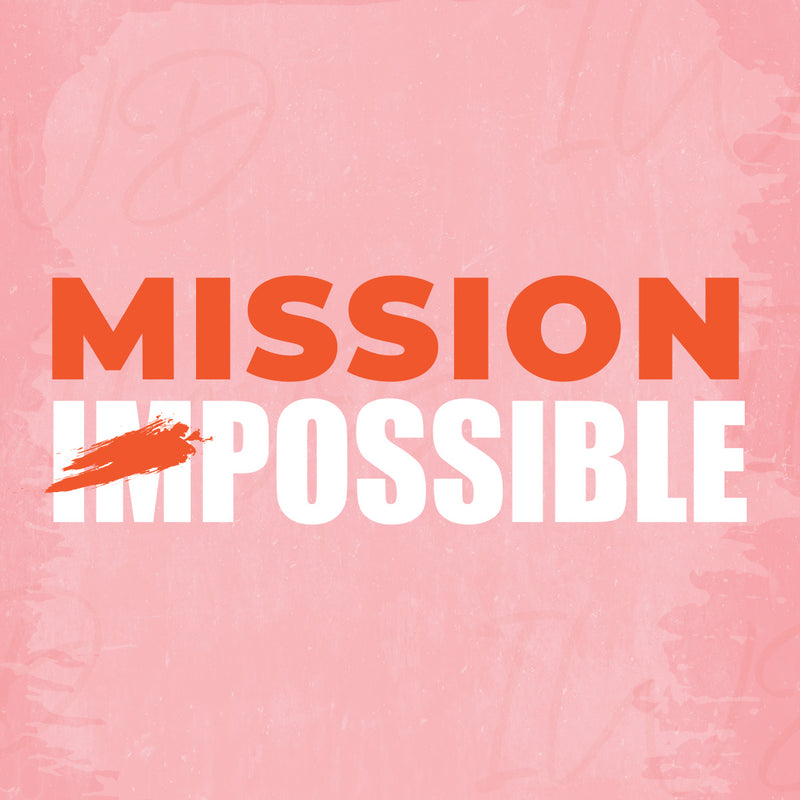
International Women’s Day 2023: Mission Possible
MISSION POSSIBLE 💪
WEDNESDAY 8TH MARCH
At AYBL, we believe that all women belong in every corner of the fitness industry. From competing in contact sports to creating legacies which will be remembered for years to come. But we also know that’s not always the case.
When it comes to a woman’s place in fitness, there’s still work to be done.
This International Women’s Day, we’re making it our own mission to make every aspect of fitness accessible and enjoyable for all women.
There’s more…
If you’re a veteran of the brand, you’ll know we’re wholeheartedly committed to empowering our female community to become the best version of themselves. Which is why, this month, we’re asking you to establish your own mission - big or small.
Because we believe, despite the odds, you should never settle for anything less than the best you can do.

ONE BRAND. ONE MISSION.
Together we are stronger than the sum of our parts, and far stronger than any obstacle that dares stand in our way. We don’t stray away from challenge, in fact, we embrace it because that is where we really thrive.
With this in mind, we want you to set yourself a goal - or a mission, if you will - that’s personal to you.
It could be to compete at the highest level, maybe you’re keen to help encourage more women and girls from different backgrounds to participate in sport, or perhaps it’s something much simpler than that, like wanting to improve your relationship with fitness.
Whatever the case, we’re here to make you feel inspired, confident, and give you the support you need, always.
FREE* LIMITED-EDITION TEES
Free? You read that right!
As part of our pledge, we’ve compiled a collection of three limited-edition t-shirts in the colours: Black, White and Pink. Crafted from a soft, lightweight cotton blend, each t-shirt features our bespoke ‘Mission Possible’ motif on the centre back.
Wondering how you can get your hands on one? Here’s everything you need to know.
Our International Women’s Day Limited-Edition T-Shirts will launch on Wednesday 8th March at 3pm GMT / 4pm CET / 10am EST.
They’re FREE to purchase, all we ask is that you kindly make a donation of either £1, £2, £5, £10 or £15 and cover the cost of shipping. All proceeds will be donated directly to Women’s Sports Foundation, a global charity which is committed to enabling all women and girls to reach their full potential in sports and in life.
But you’ll have to be quick because once they’re gone, they’re gone - and last year, they sold out in less than an hour!

THE ATHLETES
Our mission would not be possible without our community and the women who share our values and vision.
This year, we’ve partnered up with three truly influential athletes who have set the bar high when it comes to actively and publicly inspiring other women in fitness.
Introducing:
- British High Jumper, Laura Zialor
- British Olympic Gymnast, Alice Kinsella
- British Weightlifter, Jenny Tong
Sharing their own mission and journey, these women are proof that bringing your passion and chasing excellence gets results.
Check back soon to learn more about their individual stories.
SO, WHAT DO BARRIERS LOOK LIKE IN THE WORLD OF FITNESS?
We strongly believe that fitness is a place for everyone, everywhere. But we understand that there are barriers that stop this from happening. These include, but are not limited to:
- Body image and appearance;
- Attitudes and prejudice towards disability, race, gender, sexuality and socioeconomic status;
- Unwanted attention and criticised performance;
- Gym intimidation and anxiety.
It is our duty as part of Mission Possible and as a female fitness brand to establish ways to overcome these barriers and make fitness a more inclusive place.

International Women’s Day has been observed since the start of the 1900s. It has taken a lot of hard work and perseverance from women throughout history to get to where we are today, but that doesn't mean the fight is finished. We know there’s still plenty more we can - and will - do to help.
That’s our mission, what’s yours?
Our limited-edition tees launch 8th March, 3pm GMT. Don’t be late.